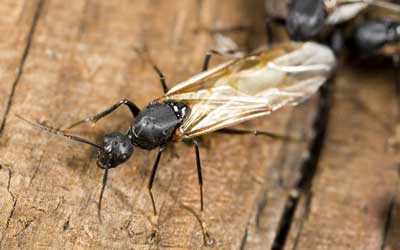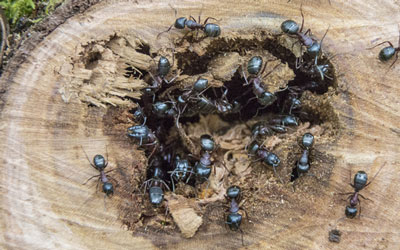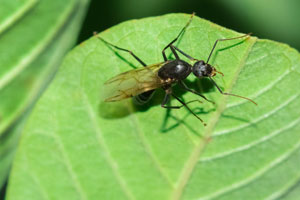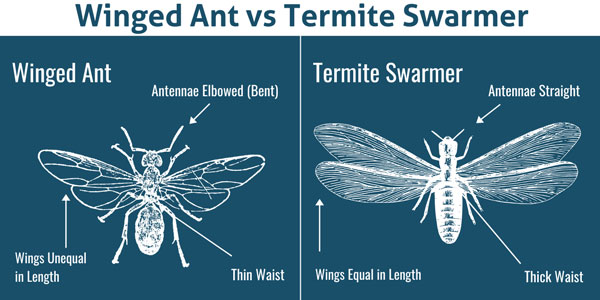 Carpenter ants can easily be confused with termites or other kinds of ants. With their affinity for tunneling through wooden structures and their recognizable appearance, it’s no surprise that people have trouble identifying them. Here in Northern Utah, carpenter ants have been known to cause extensive and expensive damage before even being discovered. So, how do you identify carpenter ants?
Carpenter ants can easily be confused with termites or other kinds of ants. With their affinity for tunneling through wooden structures and their recognizable appearance, it’s no surprise that people have trouble identifying them. Here in Northern Utah, carpenter ants have been known to cause extensive and expensive damage before even being discovered. So, how do you identify carpenter ants?
What Do Carpenter Ants Look Like?
These wood-destroying ants can look similar to other ant species, but they have some distinctive characteristics. These include:
- Their size: They are some of the largest ants that can be found in the United States, reaching around 1.5cm in length in some cases.
- Their color: They share the familiar black coloration of many other ants, but some have a particular yellow-red tint that sets them apart.
- Other features: Some distinctive features of these ants are their workers’ large mandibles and their swarmers’ long wings. Seeing swarming ants in your home is another sign that there is an active infestation.
Do I Have Carpenter Ants?
If you can’t tell which kind of ants you have in your home, there are still more indicators of carpenter ants beyond their appearance. These ants are known for carving out tunnels in wooden homes, but unlike termites, they don’t eat the wood that they chew through. This means that you’ll be able to find little trails of shavings and sawdust where they’ve been active.
Other signs of an infestation:
- Discarded swarmer wings
- Damaged wood
- Ant activity in attics and crawl spaces
It’s safe to inspect your house regularly for any ant activity or nests in your wooden walls. When you do find ants in your house, check to see if they are carpenter ants, because the problem could be much more significant than a simple annoyance.
How to Eliminate Carpenter Ants in Park City UT
If you do find carpenter ants in your house, you should not fear them biting you or causing diseases, but there is plenty of cause for concern about the damage they might cause. The safest way to deal with an infestation is to let your local pest control company know. The ant extermination experts at Rentokil are trained to both eliminate active ant infestations and prevent future ones from occurring. Reach out today for a free estimate on carpenter ant control!

 Springtime beckons the return of many pest problems. In our region, ants are one of the most troublesome springtime pests! We all are accustomed to dealing with the occasional house ant problem, but carpenter ants are one pest problem you don’t want to deal with. True to their name, carpenter ants nest in wood and can cause a bit of damage by excavating cavities in wood around your property. Often confused for termites, carpenter ants are a dangerous ant species that need to be prevented. The experts at Rentokil are here to share all you need to know about carpenter ants in the spring.
Springtime beckons the return of many pest problems. In our region, ants are one of the most troublesome springtime pests! We all are accustomed to dealing with the occasional house ant problem, but carpenter ants are one pest problem you don’t want to deal with. True to their name, carpenter ants nest in wood and can cause a bit of damage by excavating cavities in wood around your property. Often confused for termites, carpenter ants are a dangerous ant species that need to be prevented. The experts at Rentokil are here to share all you need to know about carpenter ants in the spring.
